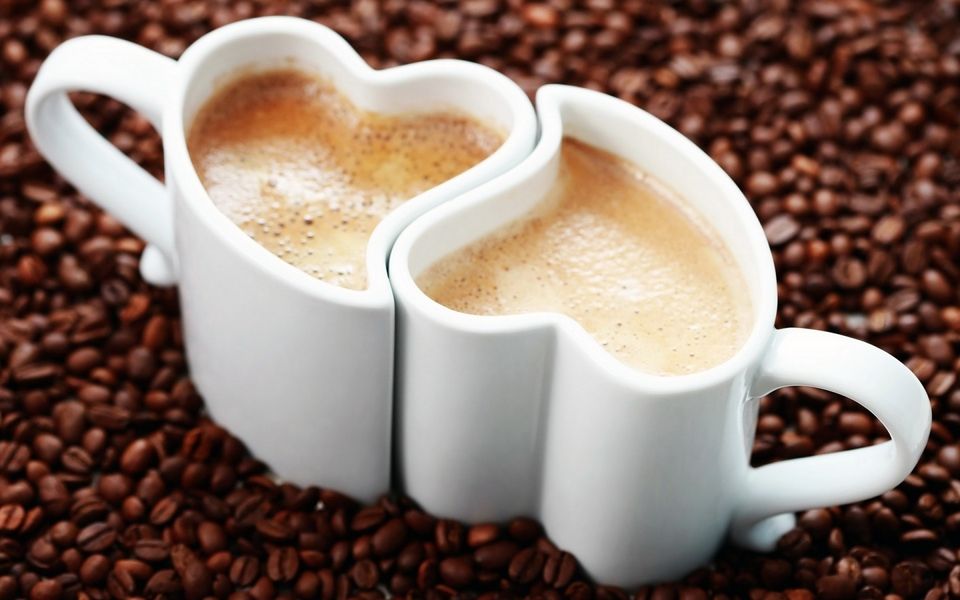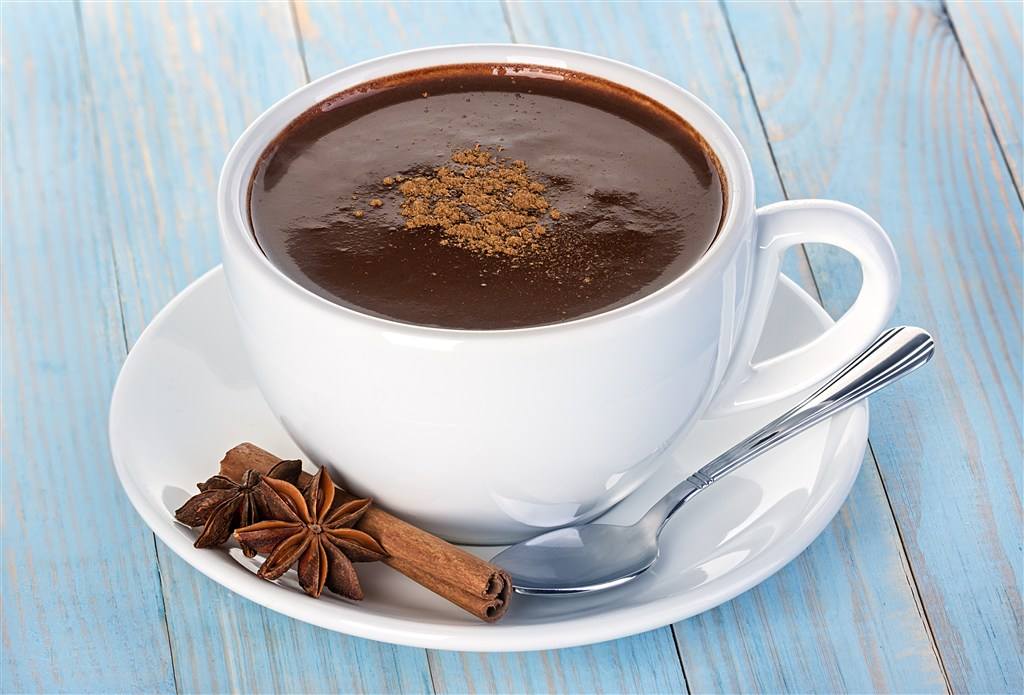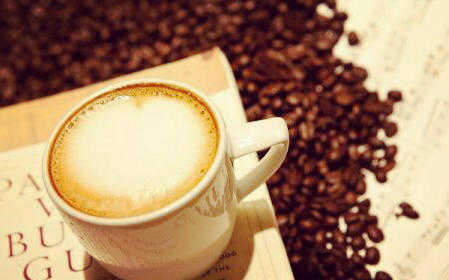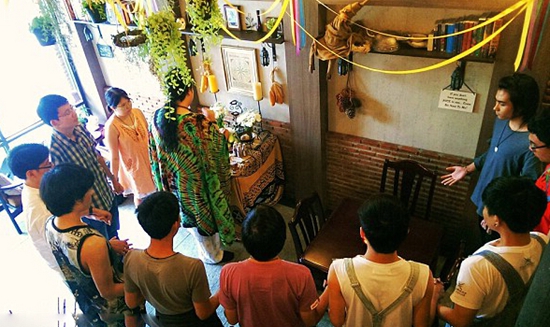If the cafe is located right, it is the best marketing.
Follow the caf é (Wechat official account vdailycom) and found that Beautiful Cafe opened a small shop of its own.
Cafes in China often give people the impression of only three forms: first, large international chain groups with hundreds or even thousands of stores in China, such as Starbucks and Costa;, Korean-style cafes that like to play star cards and attach importance to food, designed to provide leisure space for urban residents; third, independent cafes focused on small and beautiful, or heavy coffee quality, or heavy space design. China's successful local coffee chains seem to belong outside these three major groups, and Beijing's Flatwhite is a local brand fighting in the gap.

The story begins in 1989, when Hong Fu, the founder of Flatwhite, went to study in New Zealand. At that time, coffee was still very strange to Chinese people, not to mention the degree of appreciation of the quality and variety of coffee beans. In the early 1990s, he drank a coffee called Flatwhite in a cafe in New Zealand. To put it simply, this coffee has a higher proportion and flavor than a latte, and has finer milk bubbles than a cappuccino.
For Hong Fu at that time, the taste of this cup of coffee hit him and dragged him into the coffee world. In 1994, Hong Fu returned home to start his own business, which had nothing to do with coffee. Because of his work, and because he misses New Zealand's food and coffee, he spends a lot of time in New Zealand, which gives him the idea of bringing these things to China.
Because of the complex of that cup of Flatwhite, Hong Fu's own cafe is also called Flatwhite. Not only is its name Australian, but its juice, mineral water and dairy products are all imported from New Zealand, and at the beginning, technology and raw materials are also imported directly from New Zealand. In Wellington, New Zealand, Hong Fu has a frequented cafe called Fidel's Caf é, named after former Cuban leader Fidel Castro and decorated in Caribbean style. The raw bean roaster, which works with the coffee shop, is the same Caribbean-style Havana Coffee. From regular customers to business partners, Hong Fu brought Roger Young, the boss of Fidel's Caf é, and Geoff Marsland of Havana Coffee into his business.

The right time: boutique coffee at the right time
In 2006, Flatwhite opened on the east side of Xiushui Mall, also with Caribbean-style decoration. At that time, Fidel's Caf é sent baristas to take charge of coffee production, quality control and personnel training in the store. Havana Coffee flew roasted beans to China from New Zealand every week, which was a crazy move for Chinese mainland, where boutique coffee had not yet started. Coffee beans cost as much as 400 yuan a kilogram, which was a sky-high price at the time. In addition to coffee, there are a series of New Zealand-style simple meals, such as sandwiches, bagels, beef pie and so on. In the first two or three years of the business, Hong Fu just wanted to run this small shop safely.
During the 2008 Olympic Games, they opened a second coffee shop opposite the Ullens Art Center in the 798 Art District, which is now the most recognized branch of Flatwhite in China. After that, 2009 was the turning point for Flatwhite, which was no longer an independent cafe in the corner of Pianan, but went to a self-run chain store. In 2010, they set up a central kitchen in Tongzhou area, which is also an important symbol of the chain catering chain. It also set a relatively fixed tone in the design style, which is a minimalist style mainly made of wood and metal.
And behind this is the rapid growth of the Chinese coffee market since 2009, also in that year, McDonald's officially introduced McCoffee to the Chinese market, and KFC also began to try freshly ground coffee in a low profile. Since Starbucks just arrived in China in 1999 and Costa entered China in 2007, more and more coffee has entered public life, and this market share has doubled in only five years.
Due to the increase in the use of their own stores and the increase in market demand for their coffee beans, Flatwhite set up its own bean baking factory Rickshaw Roaster near Plaza 751 in the 798 Art District, where raw beans can be imported and technicians from New Zealand come to Beijing to be responsible for baking, which greatly saves costs and improves freshness and stability compared with the previous airlift of cooked beans.
The right place: go deep into the coffee maker community
Hong Fu positioned Flatwhite as a community cafe, where coffee consumers will open, while Beijing's current coffee consumers are concentrated among foreigners, college students, white-collar workers and middle-income people with overseas living experience.
So far, they have two stores in the art district, three in the diplomatic apartment, one in the university and one in the concert hall. The locations of these shops seem to be quite scattered, including commercial, residential, cultural and arts districts. The residents of diplomatic apartments are undoubtedly the main consumers of coffee. Boutique coffee is stationed in colleges and universities, specially choosing the canteen building of Beijing second Foreign Studies School, and offering more favorable prices than other branches. A large number of overseas students can also drive consumption. While the boutique coffee in public cultural places has been in advance in Shanghai for several years, it is almost unprecedented in Beijing, and people who come into contact with Western music are often important consumers of coffee. The choice of these locations is different from the general principle of site selection centered on commercial and residential areas, but expands to more in-depth leisure occasions in daily life.
In total, Flatwhite's 10 stores are divided into three categories: restaurant, cafe and coffeeshop. It is mainly in the form of cafes (serving coffee and light meals), as is the case in residential areas and campus branches. The only restaurant located in 751 Square, covering an area of more than 500 square meters, has doubled the area of more than 200 square meters of other stores. In addition to the largest number of daily catering and menu items, it can also undertake venue activities and dinners. The small coffee shop only provides biscuits, cakes and other snacks, excluding meals.
Future judgment: multi-channel output of own products
2015 is another turning point for Flatwhite. At present, its 10 coffee shop brands, which are all directly operated stores, will be further expanded in terms of mode of operation and channels.
First of all, in the production of raw materials, about 70% of the products in the baking plant opened in 2009 are still supplied to local western restaurants, cafes, embassies, etc., and 30% are for their own use. Now their factory is applying for QS quality certification, which can help their products enter the supermarket, as well as the e-commerce platform they are preparing.
Second, and more importantly, they opened the chain business this year. This business is divided into two categories, one is to provide complete coffee shop consulting business under the premise of the franchisee's own brand, to serve each other from the technical and management aspects to help them set up coffee shops; the other is to join the chain in the general sense, Flatwhite provides brands, raw materials, technology, design, and opens more Flatwhite branches.
Important Notice :
前街咖啡 FrontStreet Coffee has moved to new addredd:
FrontStreet Coffee Address: 315,Donghua East Road,GuangZhou
Tel:020 38364473
- Prev

It took only four months to turn the cafe around. These seven rules are for you.
A Yale graduate with a degree in business, he bought a small, lossmaking restaurant in 2002. Miraculously, it took him only four months to turn it around. He has been running a cafe for more than 13 years since he had zero experience. Now, he is known as the favorite coffee instructor in America. In practice, he summed up seven criteria for independent cafes, which are extremely practical.
- Next

Bangkok Witchcraft Cafe, Love Divination is popular
The world's first witchcraft cafe recently opened in Bangkok, Thailand, offering not only cakes, coffee and drinks, but also magic sticks, crystals, spices, spells of love and more powerful witchcraft. Wine Kongsorn, the owner, said he opened the store to rally Bangkok's admirers of witchcraft. The paranormal services he provides range from love spells to driving
Related
- What documents do you need to go through to open a coffee shop? coffee shop coffee shop certificate processing process
- How to purchase Coffee beans in small Cafe how to choose a suitable supplier for domestic Coffee supply Company
- How to drink Starbucks Fragrance White Coffee? how to make Australian White Coffee? what Italian coffee beans are recommended?
- The Story of Flora Coffee: the name of Flora Coffee Bean and the implication of the Flowers on Florna Coffee
- How much does a cup of coffee cost? How much is the profit of a cup of coffee? What is the profit of the coffee shop in a year?
- Yunnan small Coffee, known as "fragrant Coffee", introduces the characteristics of Alpine Arabica Coffee producing areas in Yunnan, China
- 2023 latest Starbucks full menu price list how much is a cup of Starbucks coffee what is better to drink the most popular hot and cold drinks recommended
- Starbucks different kinds of Coffee Price list Starbucks menu 2023 Top Ten Best drinks in Starbucks
- Starbucks Spring praise Comprehensive matching Coffee Bean theme Story Packaging implication and taste description
- The cost of a cup of coffee latte American coffee cost price and selling price

